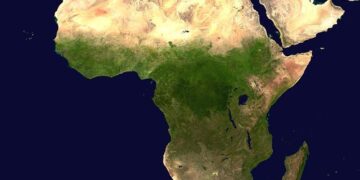Binary debates can make complex issues feel simple by papering over the real nuances that contribute to their richness. As space programs expand and major missions such as sustained presence are becoming a reality, debating whether space should be designated as terrestrial critical infrastructure is en vogue in space policy and industry circles. In my September 2023 op-ed, Space Critical Infrastructure: Breaking the Binary Debate and a Call for Space Council Action, I proposed a new model to manage a national unity of effort to secure and maintain space critical infrastructure that is outside of the terrestrial critical infrastructure model governed by Presidential Policy Directive 21 (PPD-21). Today, humanity is nearing a new phase in human space exploration that will involve launching missions to new increasingly-distant celestial bodies and establishing permanent, sustained settlements outside of low Earth orbit (LEO) for the first time in history. Meanwhile, the debate about space and critical infrastructure is focused on designating space as the 17th critical infrastructure sector under the PPD-21 model.
The argument, thus far, has been stuck on a simple yes or no question: do we designate space as the 17th terrestrial critical infrastructure sector or not? The debate centers on the argument that space assets are so important to terrestrial activities that they should receive such a designation.
However, these discussions are missing the larger point because they are overly focused on the huge volume of satellites that have entered LEO over the past five years and the services they provide to Earthlings. It is correct that those services are increasingly vital to ground activities, but novel space activities outside of LEO are going to require the same national unity of effort to secure and maintain — the current designation proposal would miss those assets and activities. A terrestrial critical infrastructure designation would by definition have to be scoped to those assets that have an impact on terrestrial assets or populations. Viewing space critical infrastructure exclusively through a terrestrial lens will add risk to our upcoming crewed missions and to any other space activities outside of LEO.
The terrestrial critical infrastructure model that governs the 16 critical infrastructure sectors, including energy, transportation, healthcare, and finance, is well-defined and broadly understood, making it tempting to plug space into the existing structure. According to the Cybersecurity and Infrastructure Security Agency,
“The 16 critical infrastructure sectors whose assets, systems, and networks, whether physical or virtual, are considered so vital to the United States that their incapacitation or destruction would have a debilitating effect on security, national economic security, national public health or safety, or any combination thereof.”
The reason the debate tends to hover around this point is because terrestrial critical infrastructure has governing documents, like PPD-21, and decades of direct experience and study — not to mention the fact that anyone can see and touch critical infrastructure every day, making it easy to conceptualize. The idea of a specific space model of critical infrastructure has no such governing documents nor the ability for most people to see or touch it. Space needs its own PPD-21, which could be developed by the National Space Council as Space Policy Directive 8 (SPD-8). This document would lay out exactly what a space-specific model of critical infrastructure would look like, and give the industry the guidelines to build critical infrastructure around what is the most critical for operations in space. It would also allow for the inclusion of activities outside of LEO that may not have a direct impact on a terrestrial system, and would therefore be irrelevant to PPD-21.
This issue has already been highlighted by existing agencies. In its most recent publication, Novel Space Activities Authorization and Supervision Framework, the National Space Council states, “Consideration of the long-term sustainability of space activities across the life cycle of space systems is critical to ensure that the outer space environment remains suitable for exploration and use by current and future generations.”
This is not limited to LEO but encompasses the long-term sustainability of all space systems far beyond LEO. The path to ensuring sustainability is to create a new model for critical infrastructure in space.
A Framework for SPD-8
The space critical infrastructure model must be built around the realities of the environment it governs. As an example, air is not considered critical infrastructure on Earth, but it would be in space. On Earth, we make no distinctions based on where critical infrastructure physically resides — an electric plant in Kansas is treated the same as one in West Virginia. In space, there is a significant difference between whether an asset is in LEO or is en route to Mars, due to communications lags and other factors. Therefore, the terrestrial model cannot possibly govern the entirety of space activities because it does not fit the space environment for multiple reasons.
My September 2023 SpaceNews article called for the establishment of 13 space critical infrastructure sectors such as habitation, energy generation, and communications, some but not all of which have analogs on Earth. In addition to the sectors, the model should include location-based domains that make distinctions based on where the space asset is located, in terms of orbit or distance from Earth.
LEO Domain: Any human-made object, human, human habitation, or human transport on orbit between 100 and 2,000 kilometers above Earth sea level.
MEO/GEO Domain: Any human-made object, human, human habitation, or human transport on orbit between 2,000 and 35,786 kilometers above Earth sea level.
Cislunar Domain: Any human-made object, human, human habitation, or human transport on orbit between 35,786 and 384,399 kilometers above Earth sea level.
Planetary Domain: Any human-made object, human, human habitation, or human transport at the surface or subsurface, or in orbit around any celestial body inside our Solar system.
Interplanetary Domain: Any human-made object, human, human habitation, or human transport inside our Solar System that’s in between the gravitational influence of planets.
Interstellar Domain: Any human-made object, human, human habitation, or human transport beyond the limit of the heliosphere.
Organizing and owning space domains
Under Space Policy Directive-3, the Department of Commerce has the responsibility for space traffic management, so it would have a significant role in the LEO domain. The DoD owns the Global Positioning System (GPS) constellation, which is in GEO. The average distance between Mars and Earth is 250 million kilometers, which falls into the Planetary Domain. The breadth of current space activities, to say nothing about novel space activities, demands that space assets be treated differently depending on their distance from Earth, and the domain model allows those designations to be made in a way they cannot be under the terrestrial model. Federal agencies can be designated under two categories for each domain:
Response Agency: The federal government agency designated to respond to issues or emergencies in a given domain.
Governance Agency: The federal government agency designated to make policies for, and generally manage activities in, each domain.
The National Space Council would serve the coordination function across all domains and sectors, allowing the appropriate expertise to be applied to each space activity.
Incidents prior to launch, such as a supply chain attack, cyber attack on a ground segment, kinetic attack against a vehicle, or others would fall to the Department of Homeland Security (with the possible inclusion of the DoD under a homeland defense scenario). Incidents occurring after the vehicle crosses into internationally recognized space would fall under the space critical infrastructure model. The National Space Council has the power to settle the debate through policy. The policy, which could be SPD-8, should be built around entirely new sectors that are critical to operations in the space environment and should also include the domain element to govern responses in different parts of space. This model brings more of the correct experience to the table in the event of an incident. It also ensures that future space activities that do not directly impact systems or activities on Earth are considered critical infrastructure as well.
Not all space activities take place in LEO, but the current binary debate treats them that way. Designating space as terrestrial critical infrastructure means, by definition, that the assets must have an impact on activities or systems on Earth, which will not always be the case — especially for activities like asteroid mining or developing and sustaining a human presence on the Moon. Without a dedicated space critical infrastructure policy, those activities will be without critical infrastructure coverage despite occurring in the harshest environments for human activities. The current binary debate misses this point, and by excluding more distant regions of space threatens the success of what may become the greatest achievements of human science and exploration. The National Space Council must recognize this reality and use this framework to create a space critical infrastructure model that considers all current and future space activities, and positions us all for extraordinary achievements in space.
Nick Reese is the cofounder and managing partner of Frontier Foundry, a data and artificial intelligence company based in Washington. He was the director of emerging technology policy at the U.S. Department of Homeland Security from 2019 to 2023.
>>> Read full article>>>
Copyright for syndicated content belongs to the linked Source : SpaceNews – https://spacenews.com/more-than-just-leo-a-framework-for-spd-8-and-space-critical-infrastructure/































